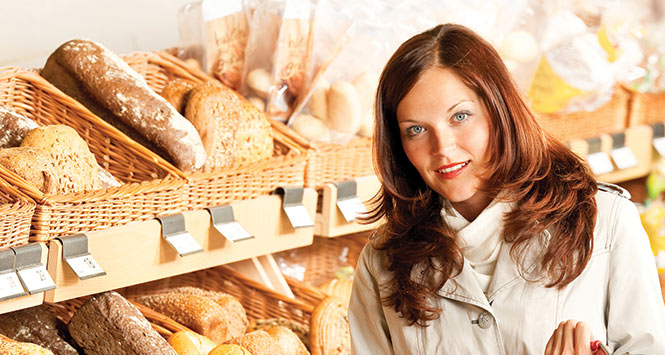Shoppercentric has launched a new ‘Shopper Stock Take’ research index, set to become an annual benchmark, providing comparisons for future reviews. The report reveals new consumer trends, including shopping little and often, the increasing demand for fresh food and online shopping.
by Émer O’Toole
The convenience sector is changing and retailers need to constantly adapt to meet the needs of consumers. Now, new research by Shoppercentric has revealed key areas for retailers to focus on: spending habits, channel hopping and online media.
Shoppers tend to be more careful in their spending these days and the shopping little and often trend is increasing, which is welcome news for the convenience sector. In fact, one in ten shoppers rarely do a main shop and 71% said this is because it is cheaper than shopping elsewhere. Shoppers visited an average of four stores or websites in the last fortnight and one in three vary where they shop to get different products in different places, demonstrating that savvy shopping is not all about price. With these changing shopping habits, the challenge for retailers is to make sure their shop is one of the customers’ preferred options. For c-stores there’s further good news: economy of time also drives one in four shoppers and planning what to buy before shopping is a preference for 71% of shoppers. Therefore, retailers should make sure products are easy to find with clear signs in each section of the shop.
Sales of fresh food are growing with promise in stores and following the Food Standards Scotland recommendations to the Government on how to improve Scotland’s diet last year there is set to be even more pressure to increase the number of healthier lines in-store. Of the shoppers surveyed, 73% said they prefer to buy ingredients to make meals from scratch, as opposed to ready meals. This changes shopping habits as well since 80% of shoppers say they now buy fresh food as and when they need it so that it is really fresh. Although retailers may be reluctant to improve their fresh offering for varying reasons, it’s getting to the point where not having a good offer is becoming detrimental to stores.
An increasing number of shoppers are taking ethics into account – 55% of shoppers believe that their more considered approach to spending on groceries and household products has made them more environmentally friendly. Additionally, 58% say they prefer the money they spend to benefit British businesses. This has led to a drive away from supermarkets and chains and an increased desire to visit independent stores.
However, price remains ahead of ethical or environmental considerations for 57% of shoppers. Promotions and price cuts are popular with consumers but retailers should be careful about what deals they offer. Price matching appeals to 84% of shoppers but promotions that rely on mobile technology to be activated are unpopular with UK consumers, demonstrating that the appeal of interaction isn’t quite there yet. Over half of shoppers (54% overall, and 60% of men) prefer everyday low pricing (EDLP) rather than the ‘hi-lo’ strategy often employed by grocery retailers. Misleading promotions scored an average of eight out of a possible ten ‘annoyance’ points amongst grocery shoppers and ‘out of stock’ promotions scored seven ‘annoyance’ points out of ten. Shoppers are prepared to seek out bargains as well, with 51% prepared to split their shopping across several stores in order to access the best promotions.
Each shopping channel obviously has its benefits to each individual consumer and with these choices now at their doorstep, they are picking and choosing value and when they shop to suit their needs and wants on each occasion. On average, UK shoppers now visit four different retailers a month across an average of two channels for their grocery shopping. Some of this is down to hectic lifestyles (23%), and some of this is preference – 28% shop in specific shops for specific items. The reasons people shop in a range of stores varies – 71% of shoppers go to discounters because they’re considered the cheapest, but 47% also said it was because they know they’re getting good value without having to work out promotions. Their fresh and unfamiliar brands (‘unusual foods’ according to the company) are also pulling in shoppers (19% and 23% respectively).
Also, 49% of Big Four grocery shoppers use a superstore because they can get everything under one roof – compared to just 12% of discounter shoppers. Knowledgeable, expert and friendly staff stand out as key differentiators for traditional specialists and they have a particularly niche set of drivers revolving around quality (52%), freshness (41%), and their shoppers’ desire to support the local economy (57%).
Online growth
The growth in online shopping and social media is a key trend to watch in the convenience sector. Mobile is a key catalyst to the growth of online shopping with one in four UK shoppers using a smartphone to shop. It is worth noting that 20% of shoppers now use price comparison sites and 30% use deal or voucher websites while 41% still collect and use vouchers from magazines or flyers that come through the door.
While it is clear that the discounters and digital opportunities are driving some of the changes in the UK retail landscape, the new index reveals that shoppers themselves are impacting the market. Shoppers are less frustrated with online channels than stores but what does seriously annoy shoppers via this channel are wrong items delivered on online purchase (39%) and paying for delivery (36%). Misleading or wrong promotional details were also a cause of frustration (35%). Instore, shoppers were most annoyed with closed checkouts when a store is busy (54%), rude staff (54%) and long queues (49%).
This year, keeping on top of shopper needs as they evolve will become imperative, as the market itself becomes more fragmented. Danielle Pinnington, Managing Director at Shoppercentric says this is the start of a “post-recessionary trend” where shoppers “quell their impulsivity and take an even more considered approach to their spending.”
“Their expectations of grocery retailers include great quality and service, not just low pricing – by truly understanding shoppers’ shifting dynamics a smart retailer or brand can start different conversations that potentially standout from the competitive crowd, and resonate with a more thoughtful shopper mind-set. It’s time to listen.”







